Trail blazes are markers used to indicate key information about a hiking trail, so that you can find and follow it easily.
There are slightly different systems used around the world, but in the United States and Canada, there are seven main kinds of trail signs and markers used for marking a trail.
Knowing the common methods used for marking trails and understanding how to read trail blazes will help prevent you from getting lost or wasting time wandering around trying to find the trail when it is not easy to see where it goes.
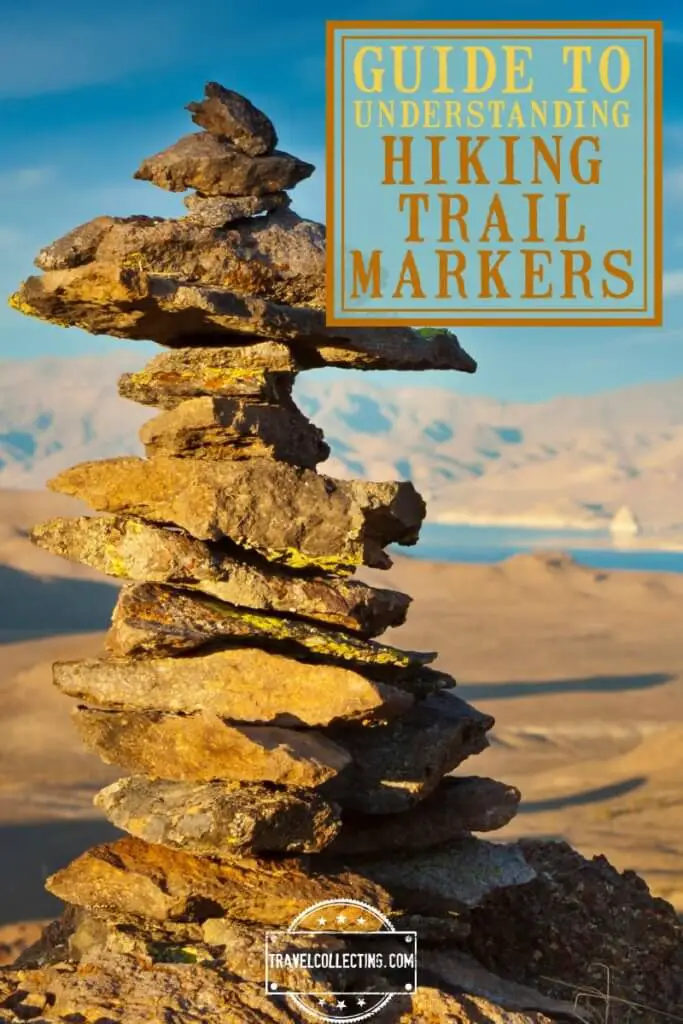
Subscribe to monthly updates with tips for planning, travel inspiration and trip ideas and get instant access to the free PDF of this
Guide to Reading Trail Markers for Hiking
How to Read Trail Markers for Hiking
1. Posts
These are perhaps the easiest hiking markers to see. Posts are erected with the trail or next destination marked, usually with an arrow. Posts are also commonly used to indicate distance traveled (generally called trail mile markers) or distance to the final destination or end of the trail.
The downside is that if the trail isn’t well maintained, post can sometimes be knocked over or become covered in overgrowth. Mostly, though they are used in trails that are maintained.
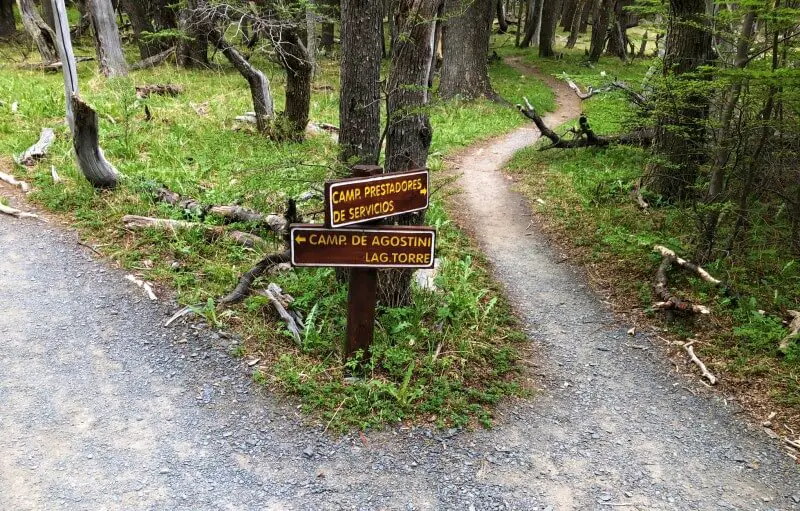
2. Paint
In the woods, when it comes to blazes, posts and stones aren’t much use because they are hard to see among the trees. So, it makes more sense to have the trail markers on trees.
There are several methods used, but perhaps the most common is to use a small dab or rectangle of colored paint that is painted on a rock or side of a tree.
What do colors on hiking trail markers mean?
The hiking trail colors don’t have specific meanings other than each specific trail has its own color. This is especially handy if you are in an area with multiple trails that sometimes cross each other. Look for your hiking trail paint color to know where to go. The hiking trail color codes also help make maps with multiple trails easier to read.
However, colors are often placed in particular patterns and these do have specific meanings.
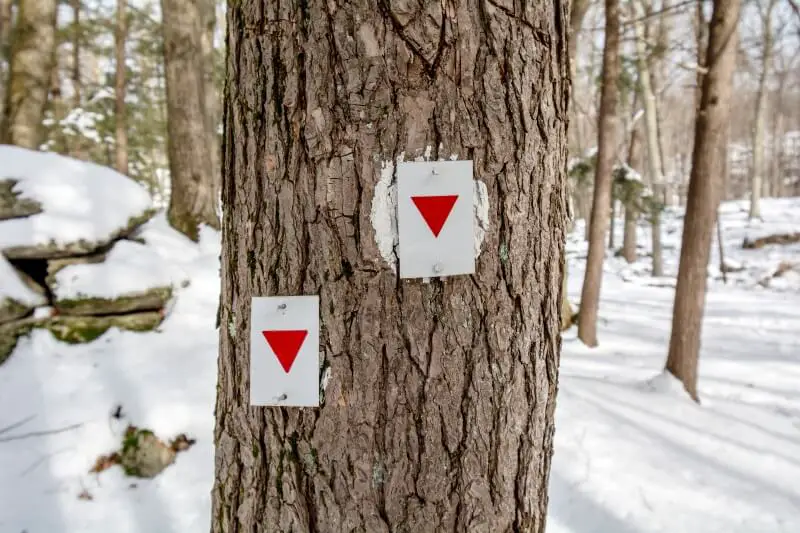
How to Read Trail Blazes (paint or affixed markers)
There are different formations sometimes used, and knowing what they mean is super helpful
Straight
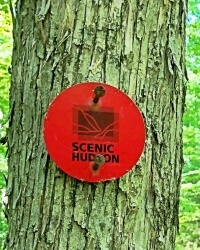
A single rectangle of paint or single marker means you are on the trail. Go straight.
Right
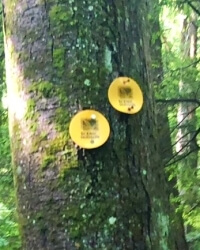
Two rectangles with the higher one to the right means go right. Think of a straight line going between the two rectangles and follow that direction.
Left
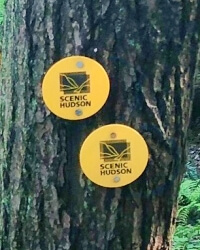
Two rectangles with the higher one to the left means go left. Again, if you think of a straight line going between the rectangle, it will show the direction.
Intersection
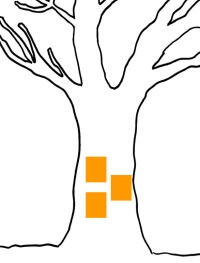
Two rectangles in a vertical line with another off to the left or right indicate a side (spur) trail going on the direction of the single rectangle. The main trail continues straight.
Start
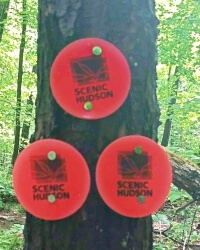
Three rectangles that form an upward arrow indicate the trail starts and is going forward.
Finish
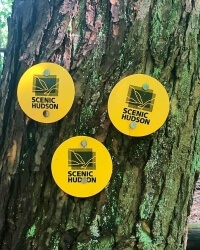
Three rectangles that form a downward arrow indicate the trail ends.
3. Affixed markers hiking signs
These are like paint, but these hiking trail signs are actual pieces of metal (usually) nailed to a tree trunk. The hiking sign is clear when it’s there, but can sometimes fall down, so it’s less common than paint.
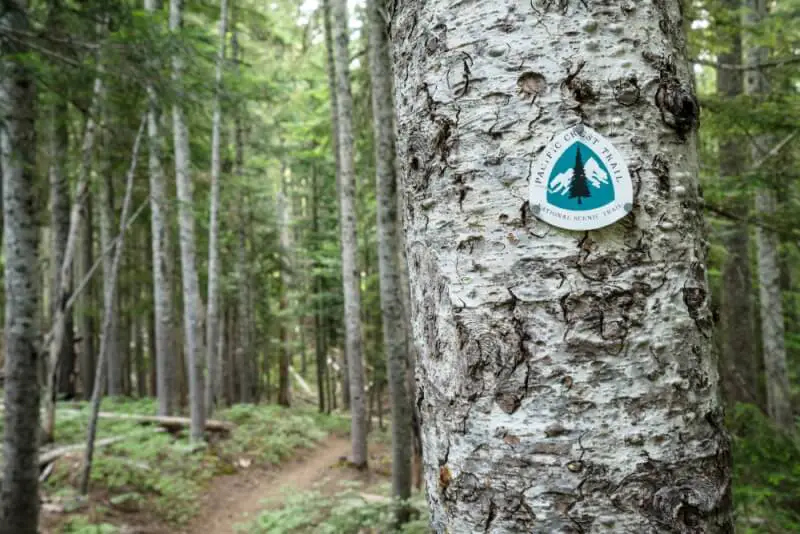
4. Carvings
Also similar to paint, these tree trail markers are deep engravings in the side of a tree trunk. Usually an X or an arrow is carved into a tree trunk as a trail sign. They permanently damage the trees and are less easy to see than paint, so are not that common.
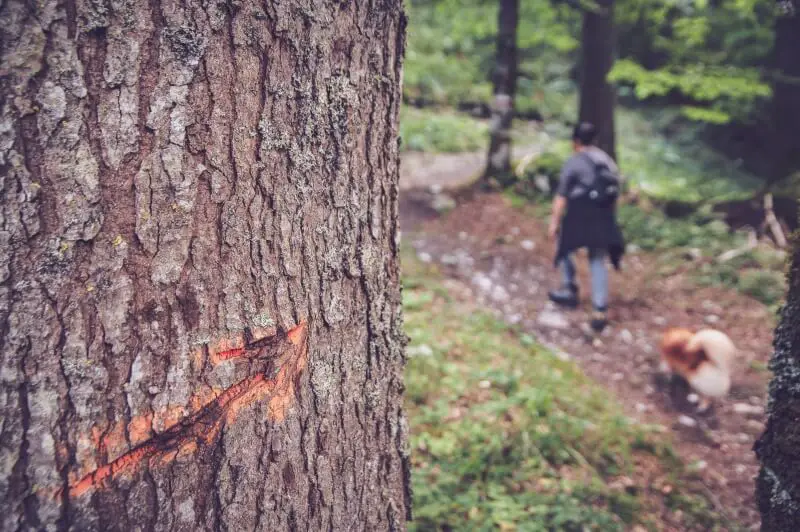
5. Flags/ ribbons
Also similar to paint in that they are a nature trail markers on a tree, these are plastic ribbons tied around tree trunks. They do no harm to the tree, but can easily be torn down.
6. Hiking Cairns
A cairn is small pile of stones used to mark a trail. Trail cairns are typically used in areas where the trail goes over rock, so the trail is not easy to see and there are no or few trees to use for painted trail markers. Cairns are sometimes made by other hikers, but in national parks, cairn rock formation piles are often built by park rangers. Because hikers use cairns, hiking with them missing can become a problem, so you should never knock down or move a cairn.
7. Logs
In addition to rockpile trail markers, sometimes fallen logs are used to indicate the side of a trail. If you know that logs are being used, then follow along them. Don’t walk across a log, as this means you are walking across the side of the trail and heading in the wrong direction.
Subscribe to monthly updates with tips for planning, travel inspiration and trip ideas and get instant access to the free PDF of this
Guide to Reading Trail Markers for Hiking
I hope this will help you find and follow trails more easily.
For other hiking resources, check out:
- Hiking Guide with things to consider when choosing a hike
- Hiking for Beginners Guide with practical tips for beginner hikers and more
- Essential Gear for beginner hikers
- Packing list for day hikes
- Hiking etiquette
- General travel resources
- Guide to picking the right Travel Insurance
Do you have any other hiking tips? I’d love to hear them. Comment below.
If you found this post helpful, please share the love and Pin it to your Hikes board!
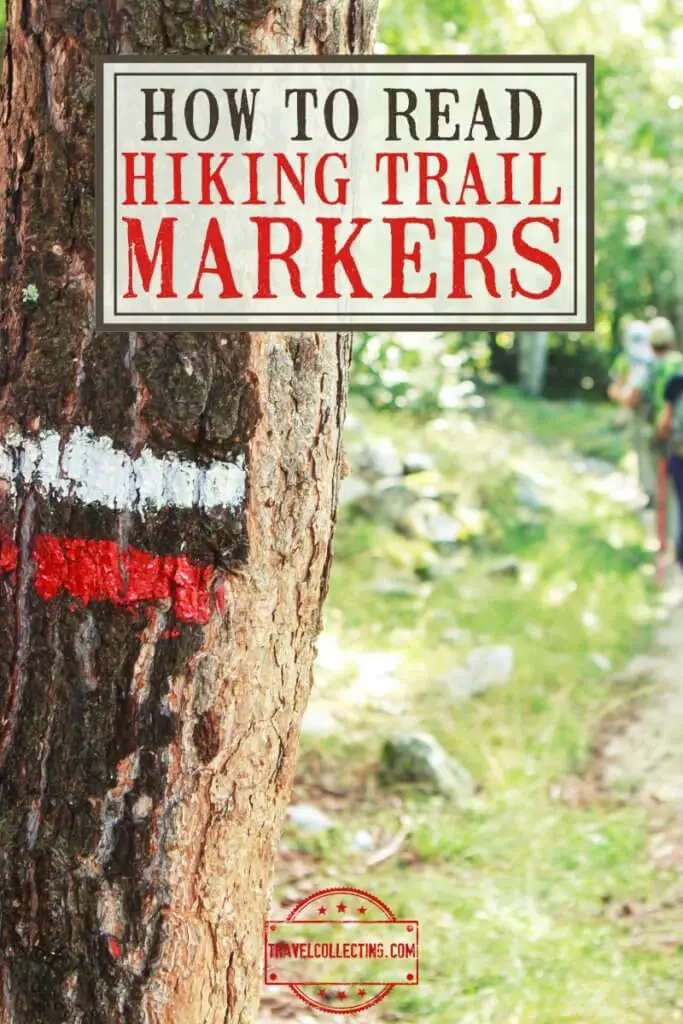
About the author

James Ian has traveled to 82 countries and all 7 continents. He is passionate about experiential travel, i.e. meaningful travel that actively engages with the environment and culture. He helps people have similar experiences that involve active participation in activities and festivals; engaging with the local food and handicrafts through lessons and food tours; and interacting positively with environment by hiking, riding, rowing, diving and low/no impact animal encounters.
Travel Collecting is a participant in the Amazon.com Services LLC Associates Program, an affiliate advertising program designed to provide a means for sites to earn advertising fees by advertising and linking to amazon.com. Amazon and the Amazon logo are trademarks of Amazon.com, Inc. or its affiliates. As an Amazon Associate I earn from qualifying purchases.

